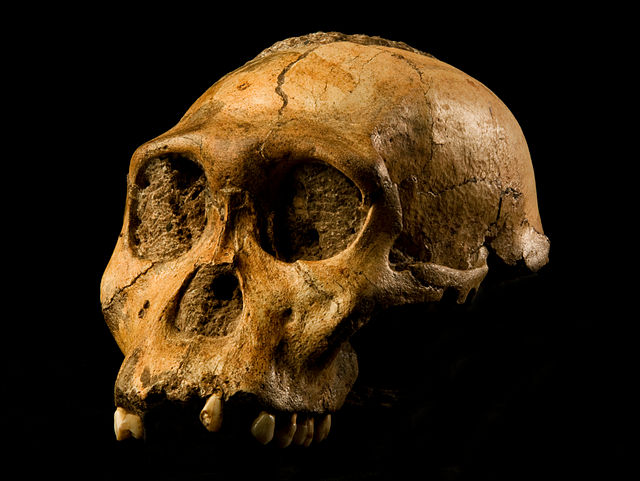Paranthropus robustus is a species of robust australopithecine from the Early and possibly Middle Pleistocene of the Cradle of Humankind, South Africa, about 2.27 to 0.87 million years ago. It has been identified in Kromdraai, Swartkrans, Sterkfontein, Gondolin, Cooper's, and Drimolen Caves. Discovered in 1938, it was among the first early hominins described, and became the type species for the genus Paranthropus. However, it has been argued by some that Paranthropus is an invalid grouping and synonymous with Australopithecus, so the species is also often classified as Australopithecus robustus.
Paranthropus robustus
Cast of the face of TM 1517, the holotype specimen of P. robustus
OH 5 (reconstructed skull above) was made the holotype specimen of the 2nd Paranthropus species, P. boisei.
Reconstruction of a female P. robustus
The australopithecines, formally Australopithecina or Hominina, are generally any species in the related genera of Australopithecus and Paranthropus. It may also include members of Kenyanthropus, Ardipithecus, and Praeanthropus. The term comes from a former classification as members of a distinct subfamily, the Australopithecinae. They are now classified within the Australopithecina subtribe of the Hominini tribe. All these related species are now sometimes collectively termed australopithecines, australopiths or homininans. They are the extinct, close relatives of modern humans and, together with the extant genus Homo, comprise the human clade. Members of the human clade, i.e. the Hominini after the split from the chimpanzees, are now called Hominina.
Australopithecine





